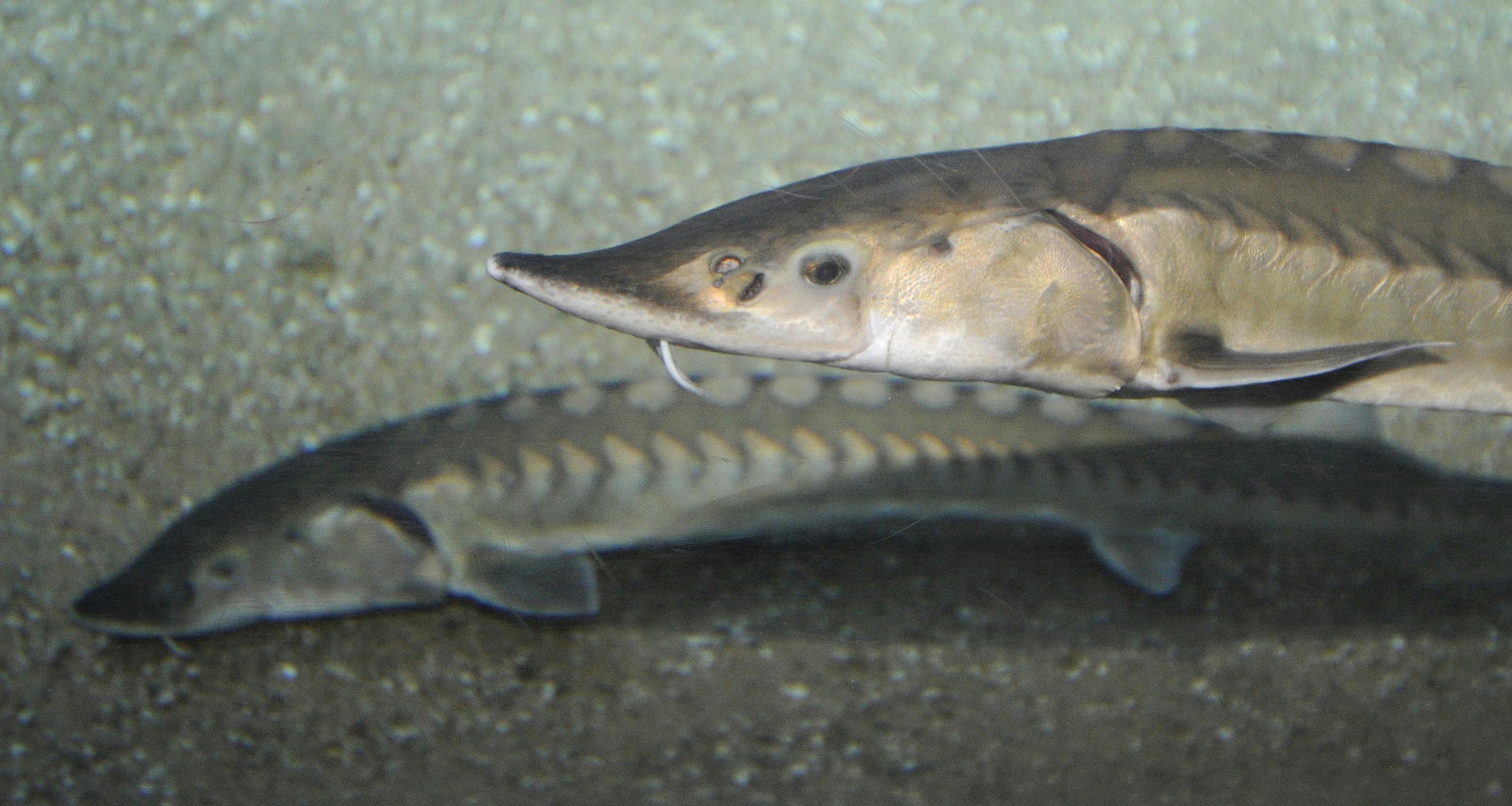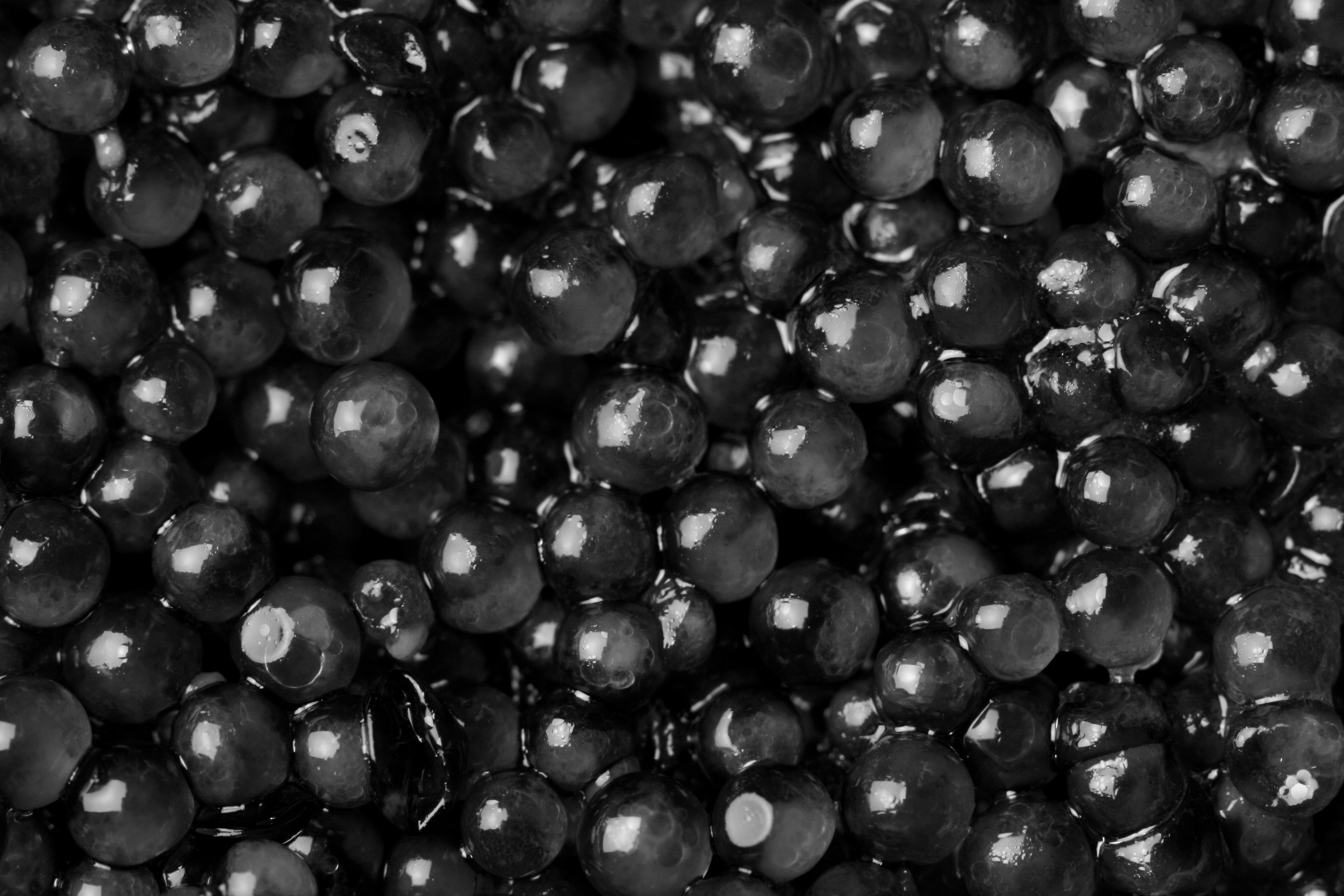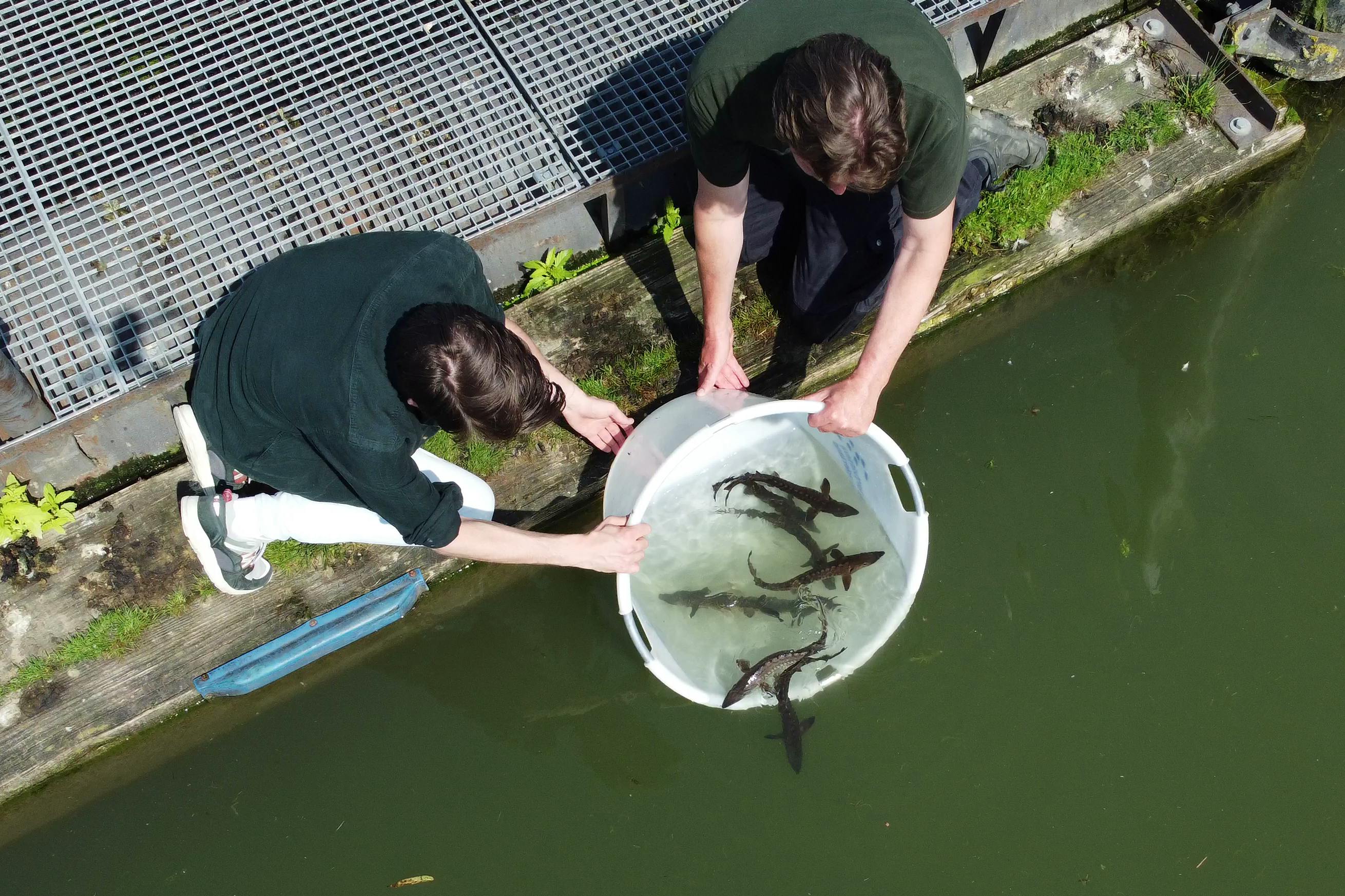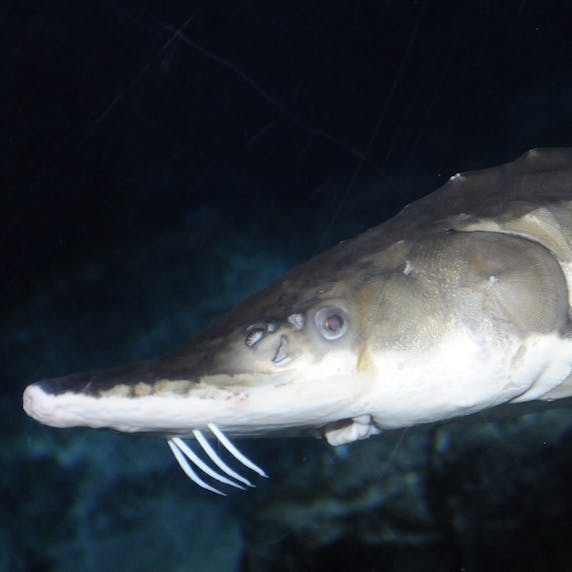
Imagine floating in a boat across the Meuse river. Suddenly, a large shape appears under the water's surface. It turns out to be a European sturgeon: a three meter long fish, swimming upstream to lay eggs. This used to be very normal, but the last European sturgeon in the Netherlands was caught in 1952. Rotterdam Zoo collaborates with other nature organizations to bring back the sturgeon to the Dutch rivers.
Acipenser sturio

Unknown, possibly up to 100 years
Up to 3.5 meters
± 300 kilograms
The European sturgeon can be recognized by its pointy snout with thread-like appendages on its underside, called barbels. It uses these barbels to search the sea and river bottom for prey. The body is elongated and greyish-brown in colour. On its back and flanks, it has diamond-shaped scutes with an enamel-like coating over them.
...sturgeons already existed during the age of dinosaurs? They have barely changed in appearance since then.
The European sturgeon used to occur in much of Europe, from Denmark and the United Kingdom to the Ukraine, Turkey and Georgia. There, they lived in rivers and seas near the coast. Today, the sturgeon is extinct almost everywhere. Only the Bay of Biscay near France still houses wild sturgeons. Nowadays, sturgeons are also released again in Germany and the Netherlands.

Sturgeon eggs, commonly known as caviar, are an expensive delicacy. A female's reproductive organs may contain millions of these eggs. To extract caviar, the sturgeon is cut open and the reproductive organs are removed: a practice that kills the sturgeon. Because of this, not only the European sturgeon, but all other species of sturgeon have been hunted in massive quantities. Of the 23 species of sturgeon, 16 are critically endangered, making the group one of the most endangered animal groups in the world.

Adult European sturgeons spend most of their time at sea. But when they want to reproduce, they swim up a river. There, the females deposit their eggs and the males fertilize them. Today, it is often impossible for sturgeons to swim up a river because of the dams and pumping stations that block their passage. By leaving these dams slightly open, sturgeons have a chance to swim through and reproduce.

Together with organizations such as ARK Rewilding, WWF and Sportvisserij Nederland, Rotterdam Zoo is committed to returning the European sturgeon to Dutch nature. In June 2023, for example, 79 young sturgeons were released into the Biesbosch, and another 250 sturgeons were released near the Dutch-German border in 2024. Whether this reintroduction is successful remains to be seen: after all, it takes about twelve years before the sturgeons are large enough to lay their own eggs. So hopefully, after twelve years, we will see adult sturgeons swimming back into our rivers on their own.
Photo: Ernst Schrijver | Ark Rewilding Netherlands
A number of adolescent European sturgeons are on display at Rotterdam Zoo. These come from a breeding center in France. Here, sturgeons are bred to eventually be released into the wild, or to be used again later for breeding. The aquarium is not big enough for adult sturgeons, which grow up to be over two meters long - if they become too large they will be transferred to a breeding center in Germany to contribute to the sturgeon's return.
